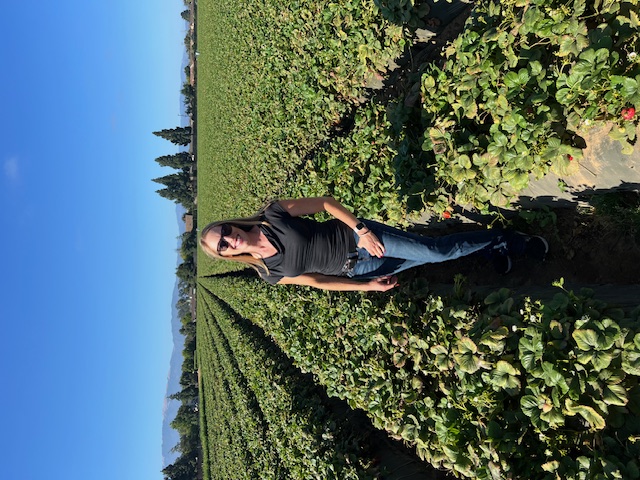10.7.2025
Behind the Scenes of Your Produce: What I Learned on the Alliance for Food and Farming Tour
I recently had the incredible opportunity to attend a farm tour hosted by the Alliance for Food and Farming (AFF). It was a hands-on, eye-opening experience that deepened my understanding of what goes into growing the safe, healthy, and nutritious fruits and vegetables we enjoy every day.

Connecting with Farmers on the Ground
The highlight of the tour was meeting the farmers themselves—people passionate about their work, who shared both the joys and challenges of growing produce. We toured active farms and witnessed field demonstrations showcasing the latest technology in agriculture, all aimed at improving crop quality and farming efficiency.

Food Safety is Science-Driven
Throughout the tour, I spoke with scientists specializing in toxicology and food safety, gaining insight into the strict systems that ensure our food is safe. From federal (EPA) to county-level oversight, produce is subject to rigorous regulation and testing for pesticide residues. AFF even provides a Pesticide Residue Calculator, which confirms that residues on fruits and vegetables are far below safety thresholds.
Simple steps like washing your produce, whether conventional or organic, help remove any remaining residues, dirt, or bacteria.

Integrated Pest Management: Nature Helping Nature
A major theme throughout the tour was the use of Integrated Pest Management (IPM). This approach combines chemical and non-chemical methods to manage pests while preserving beneficial insect populations. Farmers now use targeted pesticides that are insect-specific, reducing harm to helpful species like green lacewings, ladybugs, and predatory mites.
I even saw how drones are used to release beneficial insects across fields—an innovative, eco-friendly alternative to traditional hand applications.

Soil Health & Sustainability Practices
Modern farming isn’t just about what's grown above the ground—it’s also about what happens below it. Farmers are now focusing on enhancing soil biodiversity using beneficial microbes, fungi, and carbon-based fertilizers to promote plant health and combat soilborne diseases.
Organic and conventional farms alike are adopting sustainable practices, such as:
- Recycling crop waste (e.g., leftover romaine)
- Using solar energy (up to 80% offset)
- Selecting disease-resistant plant varieties
- Reducing excess inputs like water, fertilizer, and pesticides

A Closer Look at Some Crops
Strawberries
- 90% are grown in California
- Picked and cooled to 32°F within 2 hours
- Shelf life: about 10 days
- Rich in vitamin C, manganese, antioxidants
- IPM certified with random residue testing
Romaine Lettuce
- Grows in 75–120 days depending on season
- Cooled within 2 hours after harvest
- Shelf life: 10–14 days
- Fields are laser-weeded and fertilized with ESN to reduce inputs
- Crop waste is composted and reused
Broccoli Rabe
- Harvested in ~60 days
- Grown to 13 inches for automated harvesters
- Carefully monitored for pest and nutrient management

Ongoing Monitoring and Best Practices
Farms are routinely scouted weekly for:
- Pest and beneficial insect populations
- Soil and water quality
- Nutrient levels
- Spray effectiveness and safety compliance
Every decision is based on data, science, and sustainability—farmers don’t want to overuse pesticides, water, or fertilizer. It’s all about efficiency and balance.

Nature vs. Nature: A Balanced Ecosystem
One of the most impactful takeaways was the "Mother Nature vs. Mother Nature" concept. Farmers now rely more on natural biological controls to manage pests and diseases. The goal isn’t to eliminate all pests—doing so could destroy the beneficial insects too—but to maintain a healthy balance.

Final Thoughts
This experience gave me a renewed appreciation for the incredible complexity and care involved in getting fresh produce from field to table. From cutting-edge technologies to age-old stewardship of the land, farmers are constantly evolving and improving—not just to grow food, but to grow it responsibly.
If you're ever concerned about pesticides or food safety, I encourage you to explore science-backed tools like the AFF’s Pesticide Residue Calculator https://www.safefruitsandveggies.com/pesticide-residue-calculator/ and talk to farmers whenever you can. You’ll walk away informed—and amazed.

.jpg)











